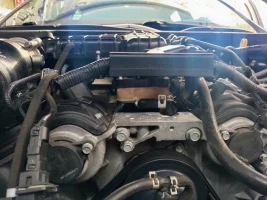This is more relevant with NA cars than it is with turbo cars. With NA cars the velocity of air entering can have a major impact on performance, when properly setup you can actually measure positive pressure on the back of the intake valve immediately before the valve opens. But this is a function of intake harmonics so it only occurs over a very narrow range of RPM. Turbo cars only care about intake charge velocity off boost, once you start building boost volumetric flow becomes more important.
This is also a misconception that dates back to the very beginning of motorsport, on port injection engines you want turbulence and tumbling as the charge moves toward the cylinder and past the injector. This promotes better fuel mixing and atomization and was the entire premise of the great debate on whether intakes should be polished or not in the carburated days. The result was a smooth cast finish intake flowed more than a mirror polished intake because the turbulence disturbed the boundary layer, and this layer effectively reduced the diameter of the intake runners.
Distribution to the cylinders is more a factor of plenum volume and shape.
On our engines, aka TGDI engines, we want to maximize flow while minimizing the inertia(boost lag), this is why we have such small plenum volumes, a spacer helps with off-boost performance but does little else once you are on boost. A rough estimate says to move from 11.06 ETs to 10.96 would take 15-20 HP at the wheels, I don't see a spacer making that large of a difference on a boosted car but, as always with stuff like this you're wrong until proven right so take this with a grain of salt.





